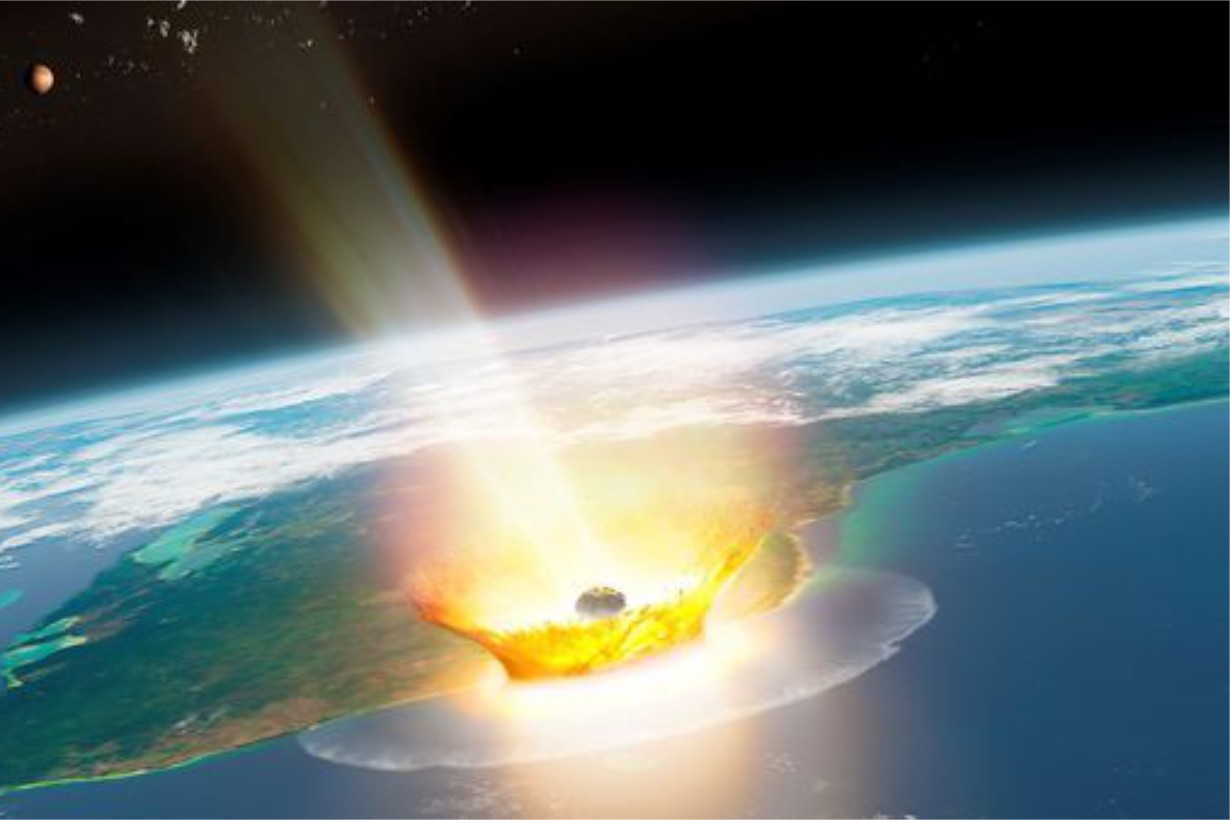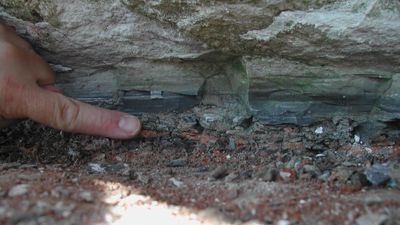Most scientists agree that the Chicxulub impactor — named after the community in modern-day Mexico near the 90-mile-wide (145 kilometers) crater carved by the rock — came from within our solar system. But its precise origins remain unclear, due to a lack of clear chemical evidence that wasn’t contaminated by Earth’s own material. Now, in remnants of the impactor collected from European regions of our planet’s crust, scientists have found the chemical composition of a rare element called ruthenium to be similar to that within asteroids hovering between the orbits of Mars and Jupiter.
The element is a “genetic fingerprint” of rocks in the main asteroid belt, where the fateful city-size rock was parked before it struck Earth 66 million years ago, Mario Fischer-Gödde, a scientist at the Institute of Geology and Mineralogy at the University of Cologne in Germany who led the new study, told Live Science. The asteroid was likely nudged toward Earth either by collisions with other space rocks or by influences in the outer solar system, where gas giants like Jupiter harbor immense tidal forces capable of disturbing otherwise stable asteroid orbits.
The findings rely on a new technique that essentially breaks every chemical bond bolstering a rock sample while it is stored in a sealed tube, allowing scientists to measure the specific levels of ruthenium in the Chicxulub impactor. The element has remained remarkably stable over billions of years in the face of Earth’s frequent, landscape-recycling geologic activity, said Fischer-Gödde, who developed the new technique over the past decade and is one of just a handful of experts in the world who can precisely analyze the rare element.
The researchers compared the results to samples from other asteroid impact sites in South Africa, Canada and Russia, and also to a couple of carbonaceous meteorites, which dominate the outer region of the main asteroid belt. Ruthenium’s chemical signatures in the Chicxulub impactor were consistent only with those of the carbonaceous meteorites, pointing to its origin in the outer solar system, the team reported in a study published Thursday (Aug. 15) in the journal Science.
“The paper presents a fantastic set of isotope analyses,” David Kring, a principal scientist at the Lunar and Planetary Institute in Texas who was part of the team that linked the Chicxulub impact crater to the dinosaur-killing asteroid decades ago and was not involved with the new study, told Live Science. “You need to understand the origin of objects like this if you’re going to properly assess future hazards.”
Scientists know from nuclear fusion models that ruthenium was forged inside previous generations of stars and dumped into the nearby universe upon their explosive deaths. The rare element eventually got sucked into the planets and asteroids that coalesced in our solar system.
On Earth, it sank deep within the planet well before the Chicxulub impactor struck shallow waters hugging the coast of modern-day Mexico, which dumped fine and acidic dust particles into the air that reduced sunlight and cast Earth into a dark winter. The apocalyptic moment exterminated more than 70% of all species, including non-avian dinosaurs, and triggered irreversible climate change that set the stage for mammalian evolution that eventually led to humans.
“It is such an event in the history of the planet, but more so in the evolution of life,” study co-author Francois Tissot, a professor of geochemistry at the California Institute of Technology, told Live Science. “We’re just drawn to trying to understand it better.”
The 66 million-year-old Cretaceous-Paleogene (K-Pg) boundary layer in Denmark, one of many sites around the world that contain fragments of the large asteroid that struck Chicxulub, Mexico. (Image credit: Steven Goderis/Philippe Claeys)
The Chicxulub crater is the only known impact site on Earth made by an outer solar system asteroid, so documenting its origins could inform models that describe impacts on planets from objects within their systems, said Tissot.
“The field of isotopic cosmochemistry has known these kinds of tipping points where suddenly there’s enough data and it starts to weigh on how the models handle the predictions,” Tissot added.
Can the story of the dinosaur-killing asteroid now be considered complete? Not yet, according to Kring, who noted more sophisticated techniques and instruments in the future should continue to probe the nuances of the space rock’s nature. For instance, while the new study rules out that the dinosaur-killing space rock was a comet, which a 2021 study had suggested, scientists don’t yet have pristine data on the diversity and distribution of comets in our solar system, Kring said. “So simultaneously, it is hard to prove that it wasn’t a comet,” he said. “Science rarely comes to a full stop.”
That data collection effort is likely to be spearheaded by NASA’s Artemis program in the coming years, he said. The program aims to collect and bring to Earth a suite of lunar samples that would contain the ancient, unchanged remnants of the asteroids and comets that bombarded both Earth and the moon early in their history, among several other potential findings.
“When Artemis really gets up and running, there’s going to be an explosion of knowledge,” Kring said. “It’s going to be spectacular.”
※Top Image: The dinosaur-killing asteroid carved a 124-mile-wide crater in Earth’s surface. (Image credit: Illustration by Mark Garlick)
This article was written by Sharmila Kuthunur from Space and was legally licensed through the DiveMarketplace by Industry Dive. Please direct all licensing questions to legal@industrydive.com.










